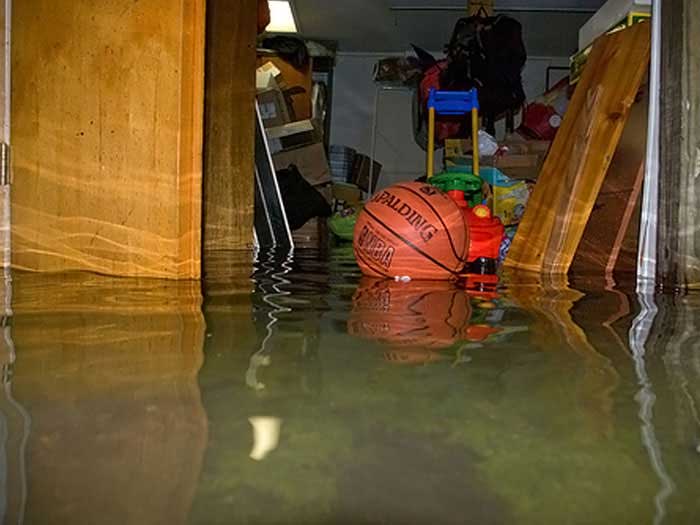Given the advent of more storms and occasional flooding, it’s a good idea to think about the potential of having a flooded basement and how to prevent it. Below we cover some useful steps to take before it might happen. Also, in case you get into this kind of trouble with your home, we have included some tips on how to proceed if you get back and discover that your basement has now flooded. So, let’s get started.
Protecting Your Home from Flooding
If your home is situated in a low-lying position where rainfall flows down to it, it can be difficult to protect it. However, it does depend on how secure it currently is from water penetration. If there’s a stronger than normal storm that visits your neighborhood, the flood water in the areas is almost inevitable. This increases the likelihood of your basement receiving some of this excess water.
Use a Sump Pump
To provide active protection inside the basement, it’s best to fit a sump pump that will be triggered by a rising water level through an active sensor. Its engine kicks into gear and begins pumping water out immediately to the exterior drainage, substantially reducing the water damage.
Think About the Possibility of a Power Failure
There is one thing to be aware of with regular sump pumps, however. While they can be submersible models, they are still electrically powered. Therefore, if the storm shorts out the power and you don’t have a backup generator, then the sump pump won’t function right when it’s needed most.
Some homeowners also invest in a battery backup sump pump that remains charged and can start up even in darkness to protect the home’s foundations and the basement area too.
But what happens if you’ve returned from a vacation or a night out to discover your basement is flooded?
First, Make the Area Safe
If you come across a flooded basement, the most important first step is to retreat and ensure everyone stays out of danger!Bear in mind that electricity is running through the basement with appliances plugged in that may still be powered up if the water level isn’t too high yet. These must be made safe.
Ensure that everyone in the home is made aware of the situation so they don’t venture downstairs. This is especially true of any children in the home who’ll be naturally curious and tempted to go take a look. It’s a good idea to send them out to a trusted neighbor or upstairs to their bedroom to get them out the way for a while.
Turn off the electricity at the main junction box for the whole basement. This avoids the risk of someone being electrocuted.
Also, understand that the flood water may have floated in from other parts of town. As such, it could have picked up dangerous bacteria along the way. So, before venturing down to the basement level, don some rubber boots and gloves too. If at all concerned, get an electrician on-site.
Second, Remove the Water Once the Exterior Flooding Is Over
If a storm is still ongoing, then the water may still be flooding into the basement. It becomes necessary to remove as much water as quickly as possible to prevent damage at a higher level and avoid the moisture getting down to the foundation level of the home.
It’s also a good idea to call in a specialist water removal company as early as possible. However, while the surrounding streets are washed out, gaining access to the property is difficult early on. Nevertheless, as soon as they can get there, the better. They’ll have professional equipment like a Hydraway drainage system to efficiently discharge water out of the basement in record time. If you have a wet basement and need further advice on how to deal with it, check the linked article from Helitech.
Third, Locate the Leak’s Source
While the water is being pumped out, it’ll be easier to spot the main ingress for the exterior water which has caused all the problems. It might be a crack in an exterior facing wall that has let in the water. This crack may have widened further due to the pressure from the water outside too. It’s also possible that window frames have become looser with gaps having developed that the water sought out.
You could even go outside to spray a garden hose at the spot where it’s believed there’s an issue and see if more water comes inside the basement that way. If you live alone, ask a friend to come over so you can verify the trouble spots. If they’ve got flooding too, offer to do the same for them.
Once confirmed, it becomes a resolvable problem to prevent future flooding events during the cleanup process.
Fourth, The Cleanup
The cleanup involves removing all personal items from the basement. Most will be too wet and won’t be salvageable. Take records and photographs of the basement including making a list of losses. This will be needed when making an insurance claim to recover your losses.
It’s often necessary to run portable heaters in the basement to actively dry it out. This process can require a considerable amount of time. However, its completion is sped up by the earlier removal of now disposable items. This leaves only the foundation walls, other structures, and necessary equipment remaining which makes the tasks much easier to complete satisfactorily.
Can You Better Protect Your Basement in the Future?
Yes, you can. As suggested above, patch any leaky areas that allowed water to flow into the basement, then test them with a water hose. It’s sensible to install a system to protect it from future flooding too. Situate valuable items above the floor level, including any appliances. Combined with a water pumping facility, this should protect their loss from future minor flooding.
Also, take care to protect from obvious risk factors. These include:
• A sewer that gets backed up
• Gutter blockage
• A burst water pipe (disable the water supply immediately to reduce flood levels)
• Water heater and water storage failures (inspect them annually for holes or other wear)
While a flooded basement is a nightmare for a homeowner, by following reasonable steps, it’s possible to mitigate the damage. From there, fixing up the basement to get it back to its previous condition is possible with time, effort, and some financial expense.







